A welcoming farmhouse walkway does more than guide footsteps—it sets the mood for the entire homestead, adding texture, rhythm, and that quietly confident charm rural architecture is famous for. Whether you favor time-worn brick, softly crunching gravel, or bold slate slabs, the path to your door can become a design statement that speaks to durability, practicality, and heartfelt hospitality. The ideas that follow blend classic materials with modern know-how, weaving in smart drainage, lighting, and planting tactics so you can shape a track that feels as natural as the landscape it crosses and as sturdy as the house it serves.
1. Classic Pea-Gravel Walkway with Steel Edging
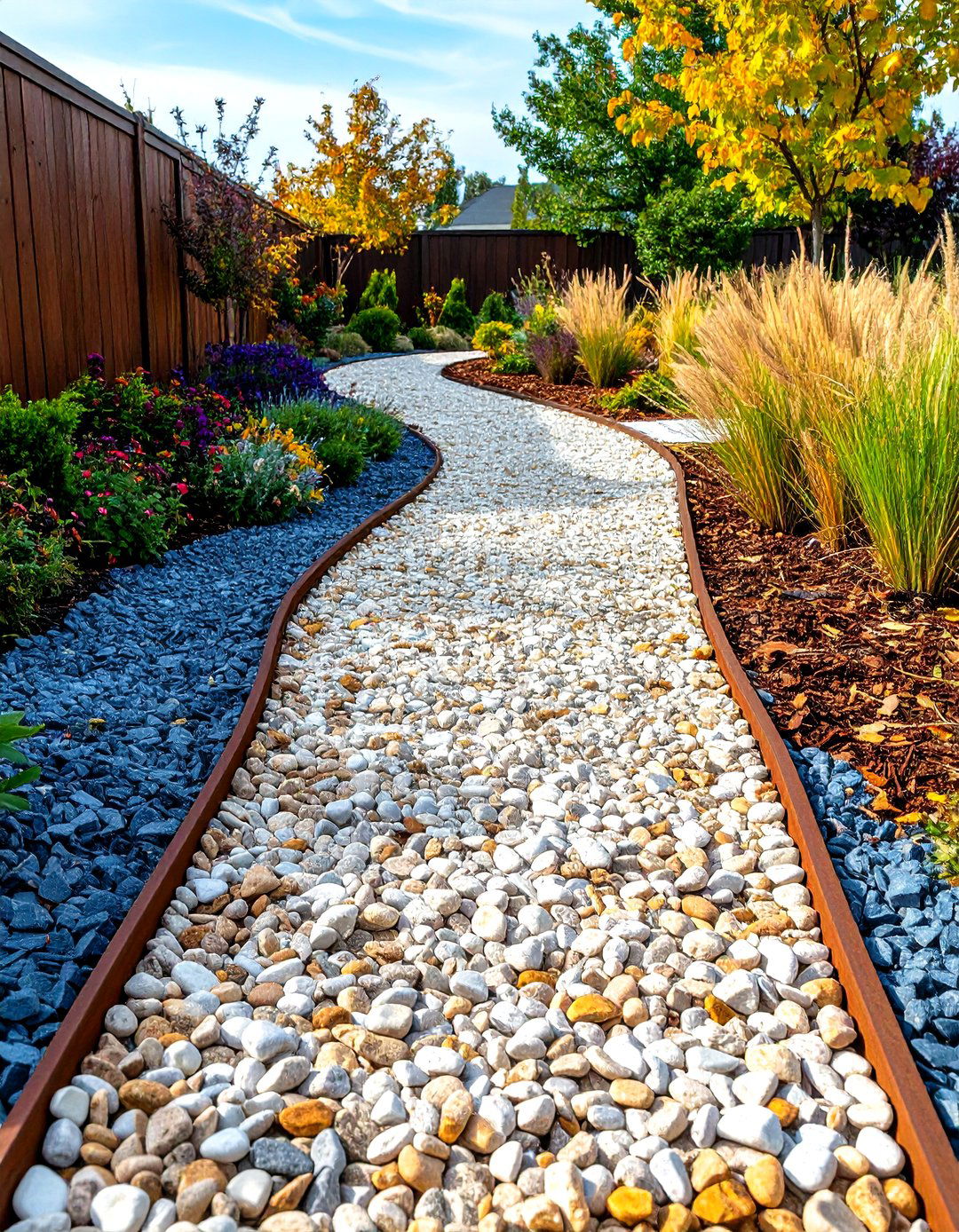
A crisp, pea-gravel farmhouse walkway offers budget-friendly character without sacrificing longevity. Excavate about 10 cm, tamp a compacted base of crushed gravel, then unroll landscape fabric before spreading 5 cm of 6- to 10-mm pea stone for a cushioned tread. Framing the path with Corten steel or weathered timber keeps pebbles corralled and visually tidy. Pea gravel drains quickly, so puddles rarely form, but plan to rake footprints smooth each week and top up material once a year as needed. Choosing 3/8-inch stones improves stability under boots and prevents roll-away issues some homeowners encounter with larger gravel.
2. Herringbone Reclaimed-Brick Walkway
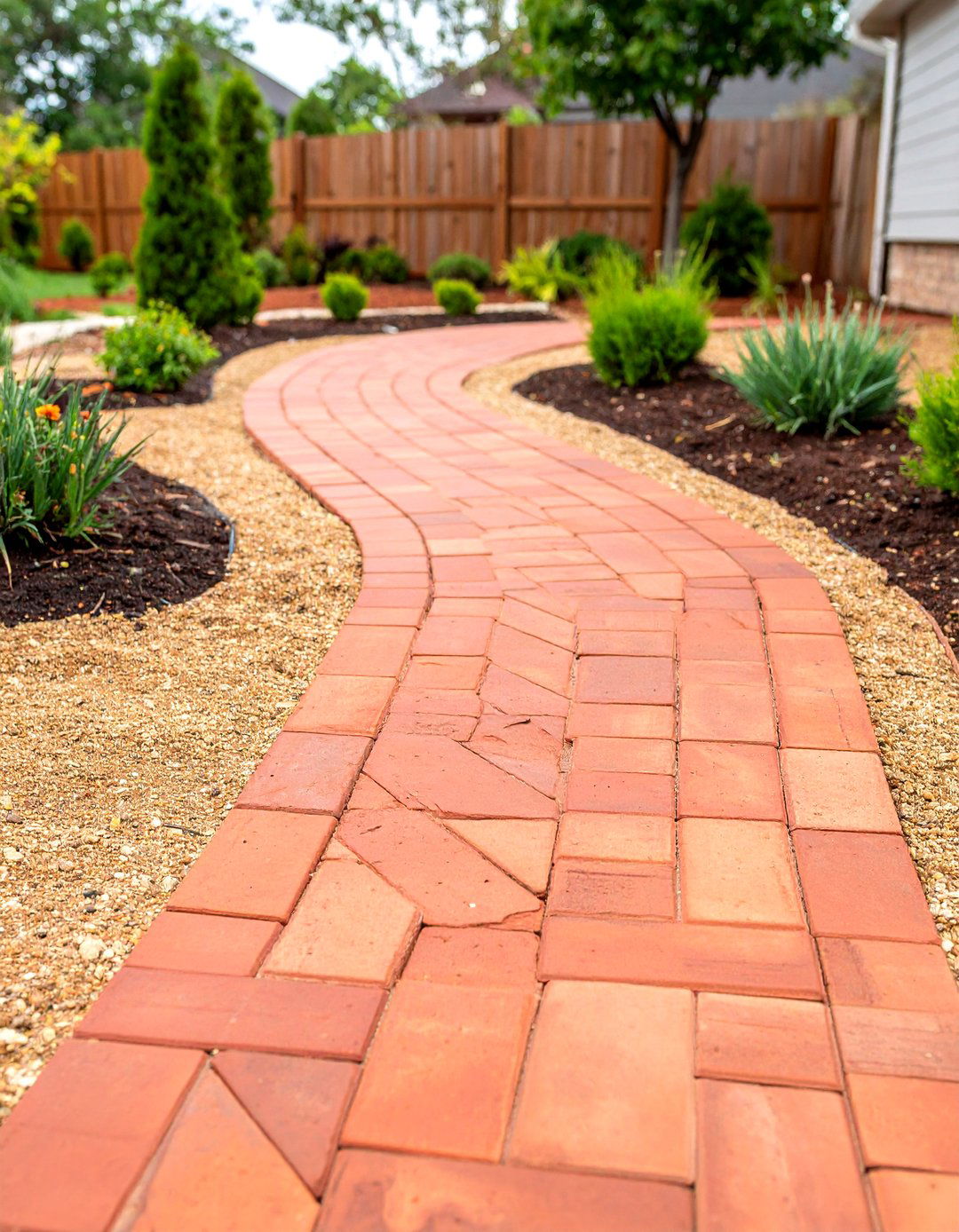
The warm, earthy reds of salvaged brick instantly sync with white clapboard and board-and-batten exteriors, giving a farmhouse walkway timeless depth. Lay bricks in a herringbone or running-bond pattern over a 5-cm sand bed, sweeping polymeric sand into joints to lock everything tight. Reclaimed units already carry natural patina, so minor chips only enhance authenticity. Bricks absorb heat by day and release it after dusk, creating micro-warmth around entry plantings. Because many old pavers vary slightly in height, dry-lay first, then flip or shim to achieve a wobble-free surface before final setting.
3. Flagstone Squares Set in Grass
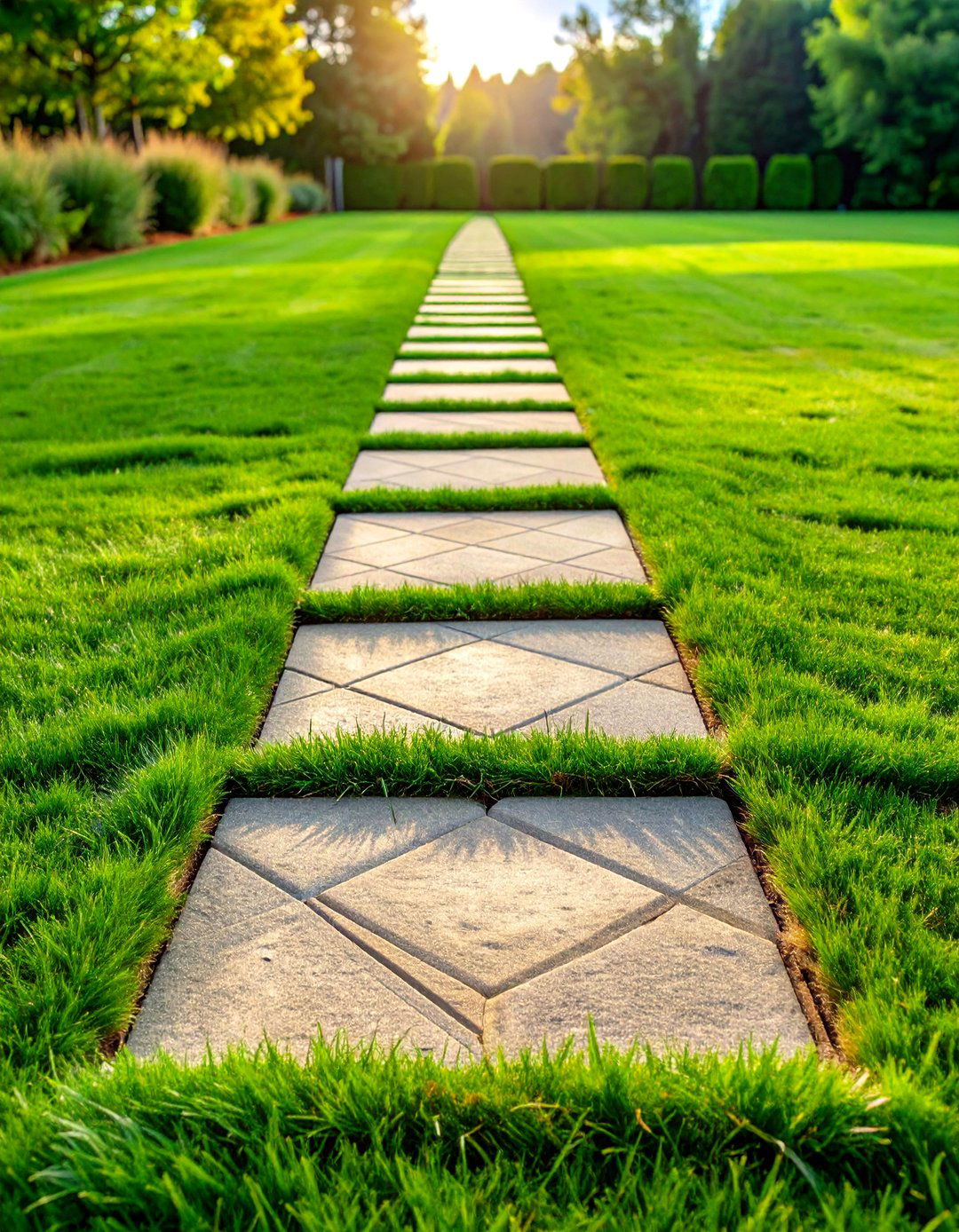
Take a tidy turn by spacing flagstone slabs like stepping squares within a living lawn, allowing cool greenery to soften every edge. Set 40- to 60-cm flat stones on a thin sand layer, pressing them until level with turf crowns so mowing stays easy. Over time, grass will knit tight around each stone, eliminating trip lips and giving the farmhouse walkway a quilt-block look that feels both elegant and uncomplicated. Avoid using slick slate in shady areas; opt for textured sandstone to maintain traction in dew or drizzle.
4. Reclaimed Barn-Wood Boardwalk

By re-imagining weathered barn planks as a raised boardwalk, you turn every step into a conversation piece of heritage lumber. Span treated joists just 10 cm off the soil to keep boards dry and allow air circulation. A quick coat of penetrating oil preserves gray tones while repelling moisture. Leave 5 mm gaps between boards so rain and crumbs wash through, and secure each plank with stainless decking screws to resist rust. This farmhouse walkway style looks especially spirited when flanked by cottage perennials spilling over the edges in casual drifts.
5. Crushed Limestone Farm Drive Walkway
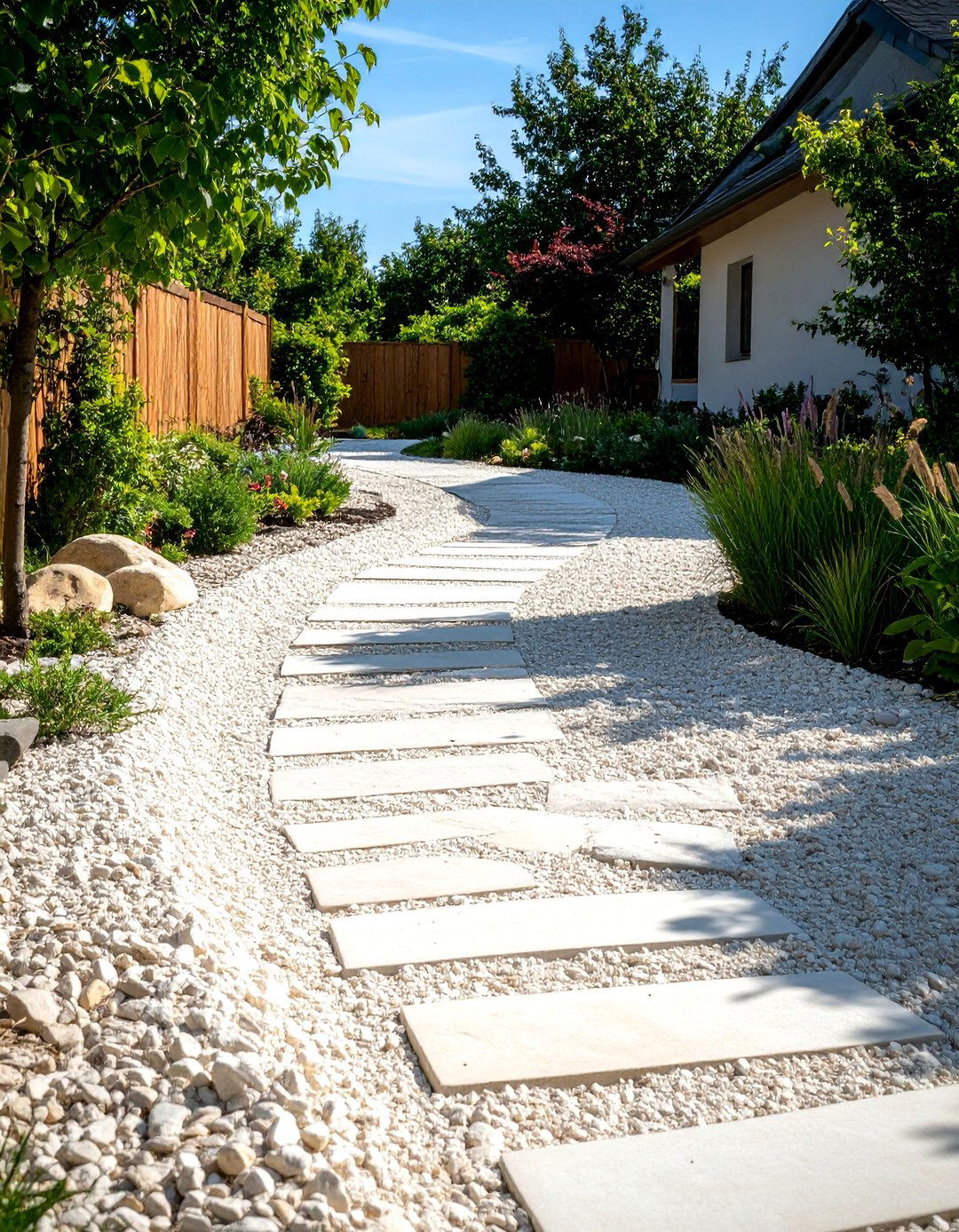
Looking for driveway toughness in pedestrian form? Crushed limestone compacts into a firm, almost asphalt-like surface yet keeps the approachable feel of gravel. After excavating, spread successive 4-cm lifts, wetting and tamping each layer until the fines lock rock fragments into a concrete-hard crust capable of supporting wheelbarrows and riding mowers. The pale hue brightens shady yards and complements galvanized metal accents often found on rural facades. Refresh with a top-dressing every few seasons to restore that clean, chalky appearance.
6. Wide Concrete Slabs with Creeping Thyme Joints
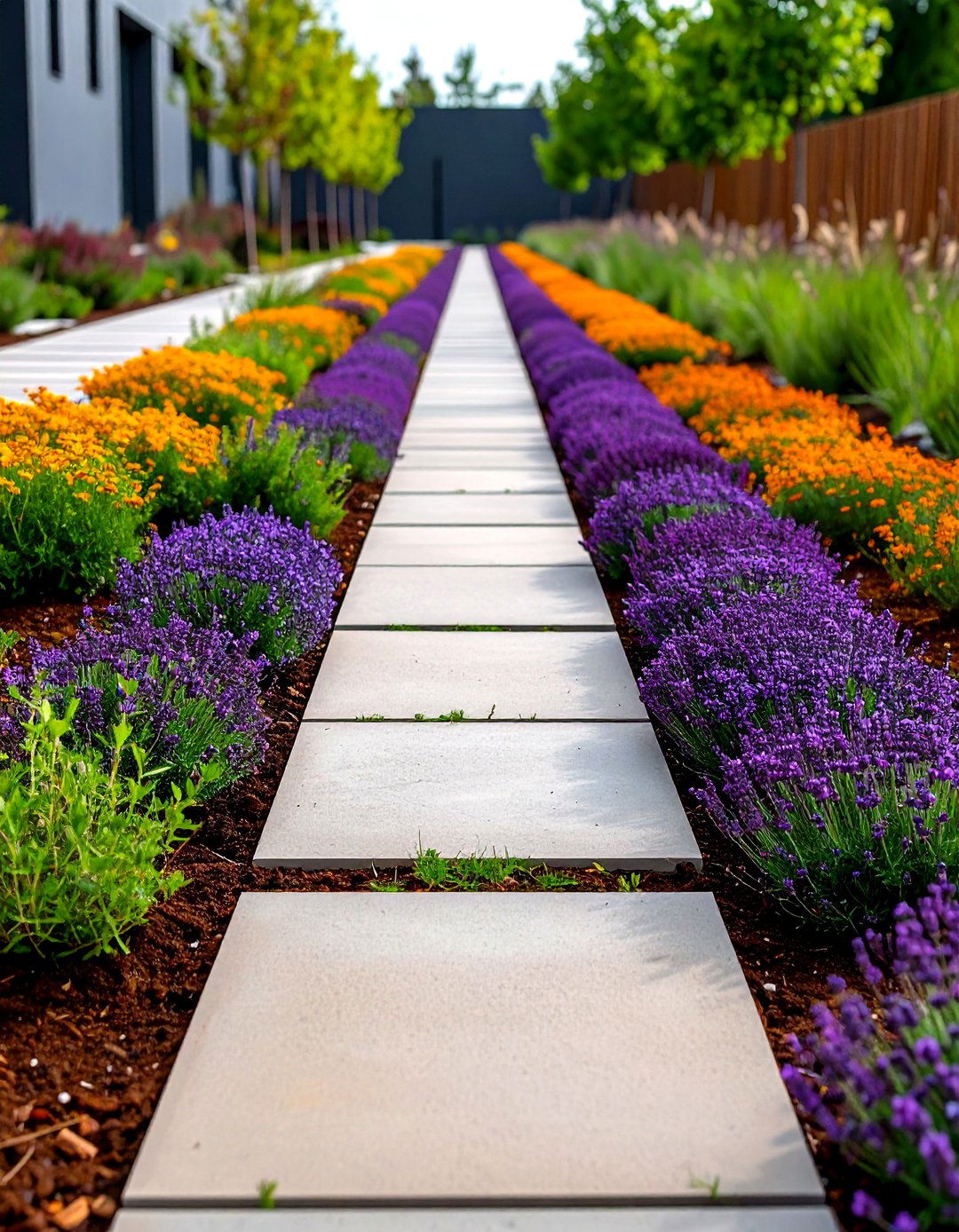
With a series of 60-cm square concrete pads separated by 10-cm gaps, you create a farmhouse walkway that blends modern geometry and herbal fragrance. Pour slabs over rebar atop crushed gravel, brush-finishing the surface for slip resistance, then backfill joints with compost-rich soil and tuck in creeping thyme plugs roughly 15 cm apart. The aromatic mat suppresses weeds, survives light foot traffic, and releases a sweet scent whenever crushed under shoes. Keep the first season irrigated so roots knit beneath the slabs, then trim lightly to prevent over-spreading.
7. Winding Cobblestone Cottage-Style Walkway
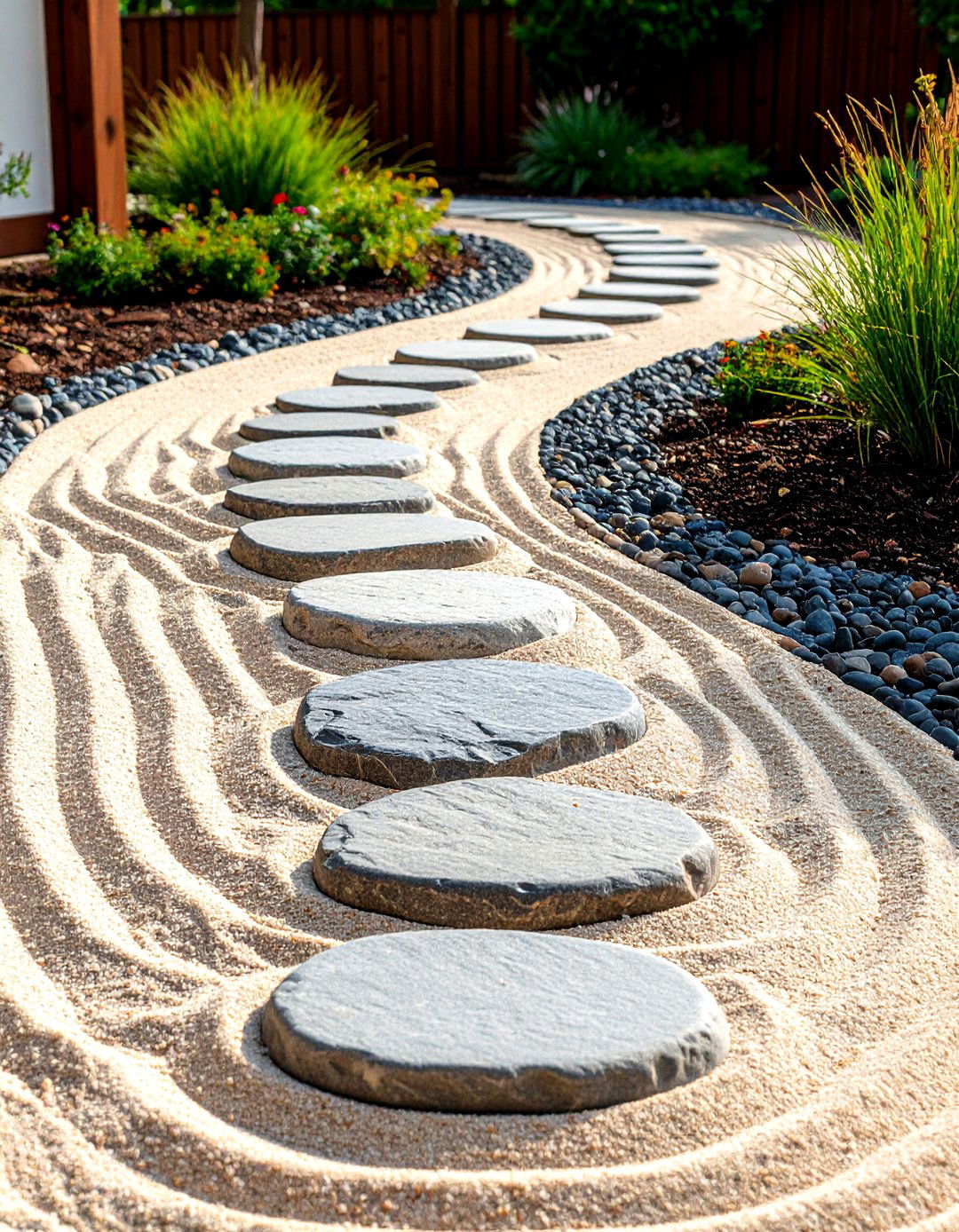
Another tactile treat is a gently curving cobblestone farmhouse walkway, perfect for properties where you want a hint of Old-World romance. Round-topped granite setts create subtle undulations that slow walking pace and invite guests to admire surrounding beds. Install them over a 10-cm compacted gravel base and sand setting bed, tapping each stone until tightly seated. Burnished grays and browns echo galvanized roofs and stone foundations often found on historical farmhouses, creating a sense of continuity.
8. Bark Mulch Chip Path for Budget Charm
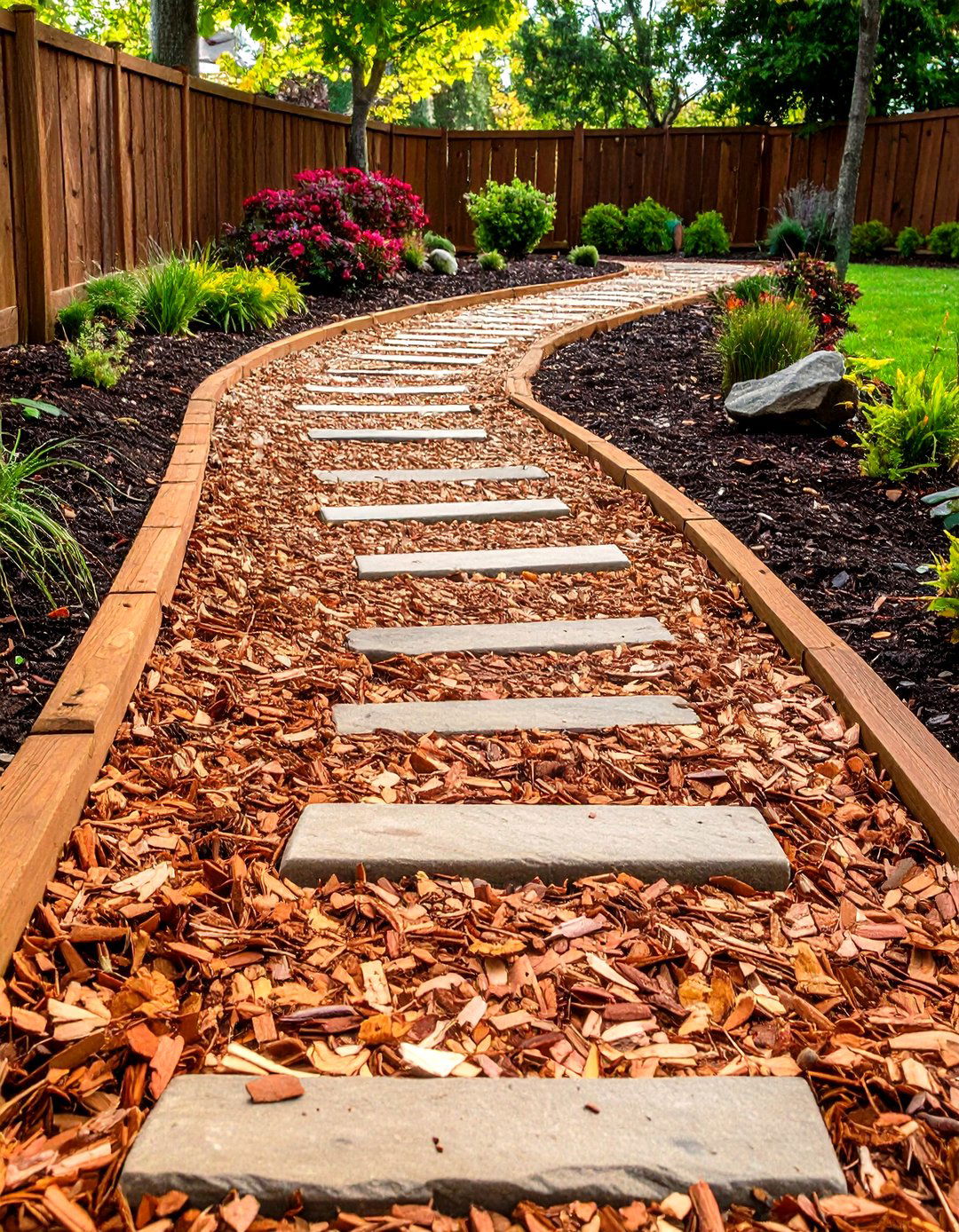
What if you crave softness underfoot and a near-zero materials bill? Spread coarse bark or wood chips 7 cm deep inside edging timbers to craft a supple farmhouse walkway that doubles as instant weed control. Chips absorb shock, making them comfortable for children and pets, yet they decompose slowly enough to last several seasons. Top up yearly and crown the center slightly so runoff sheds to edges. Because the surface is forgiving, this path is ideal beside raised veggie beds where you’ll kneel and harvest often.
9. River-Rock Mosaic Walkway
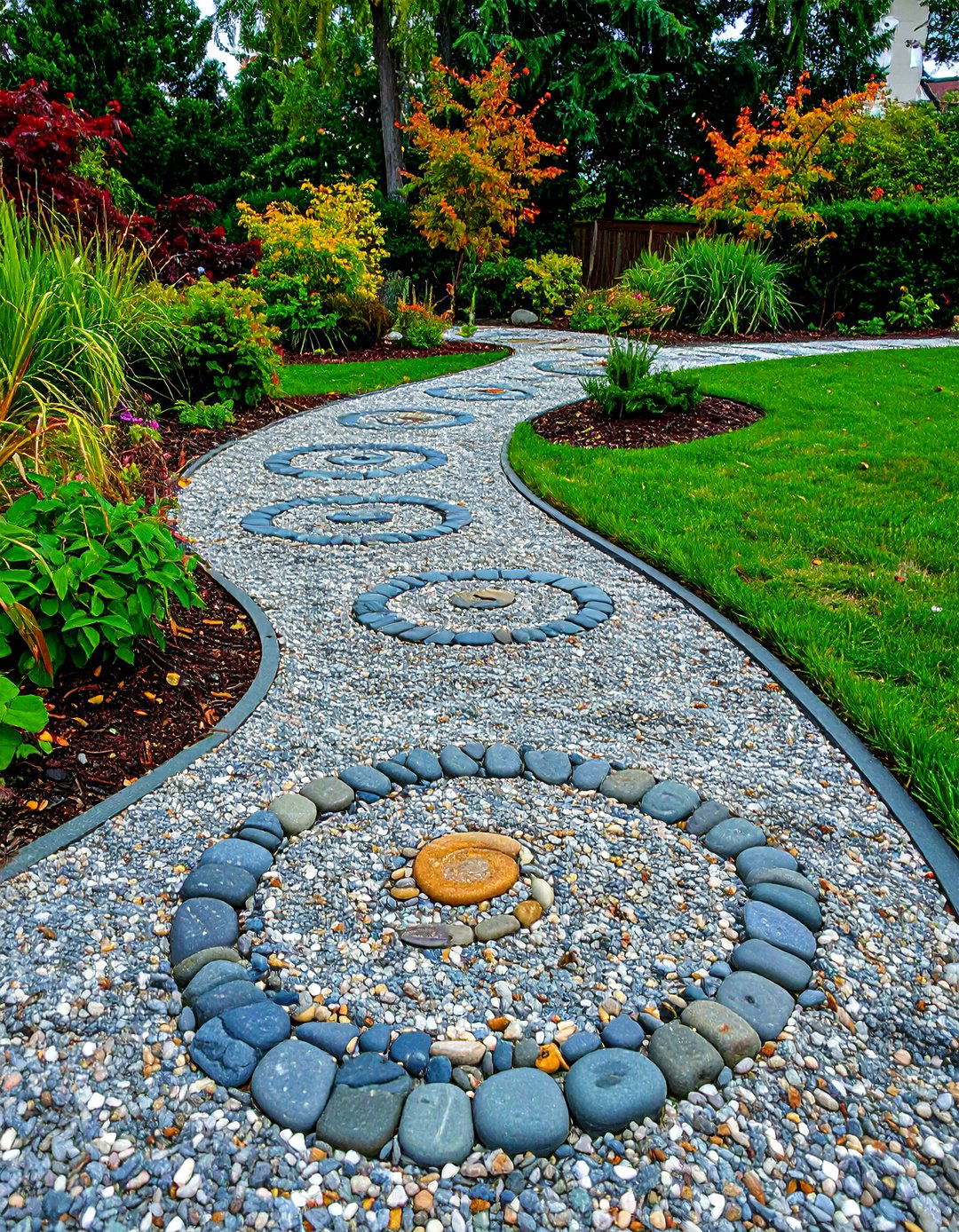
Consider assembling smooth river pebbles into swirling mosaics, transforming an ordinary path into earthy artwork. Dig a 10-cm trench, fill with tamped crushed gravel, then press damp pebbles face-up into a 2-cm mortar bed, rinsing excess mortar off stones before it hardens. Simple spirals, sunbursts, or farm-brand initials personalize the farmhouse walkway while the rounded rocks massage soles during barefoot strolls. Seal the finished surface to deepen color and simplify cleaning.
10. Split-Log “Cookie” Stepping Walkway
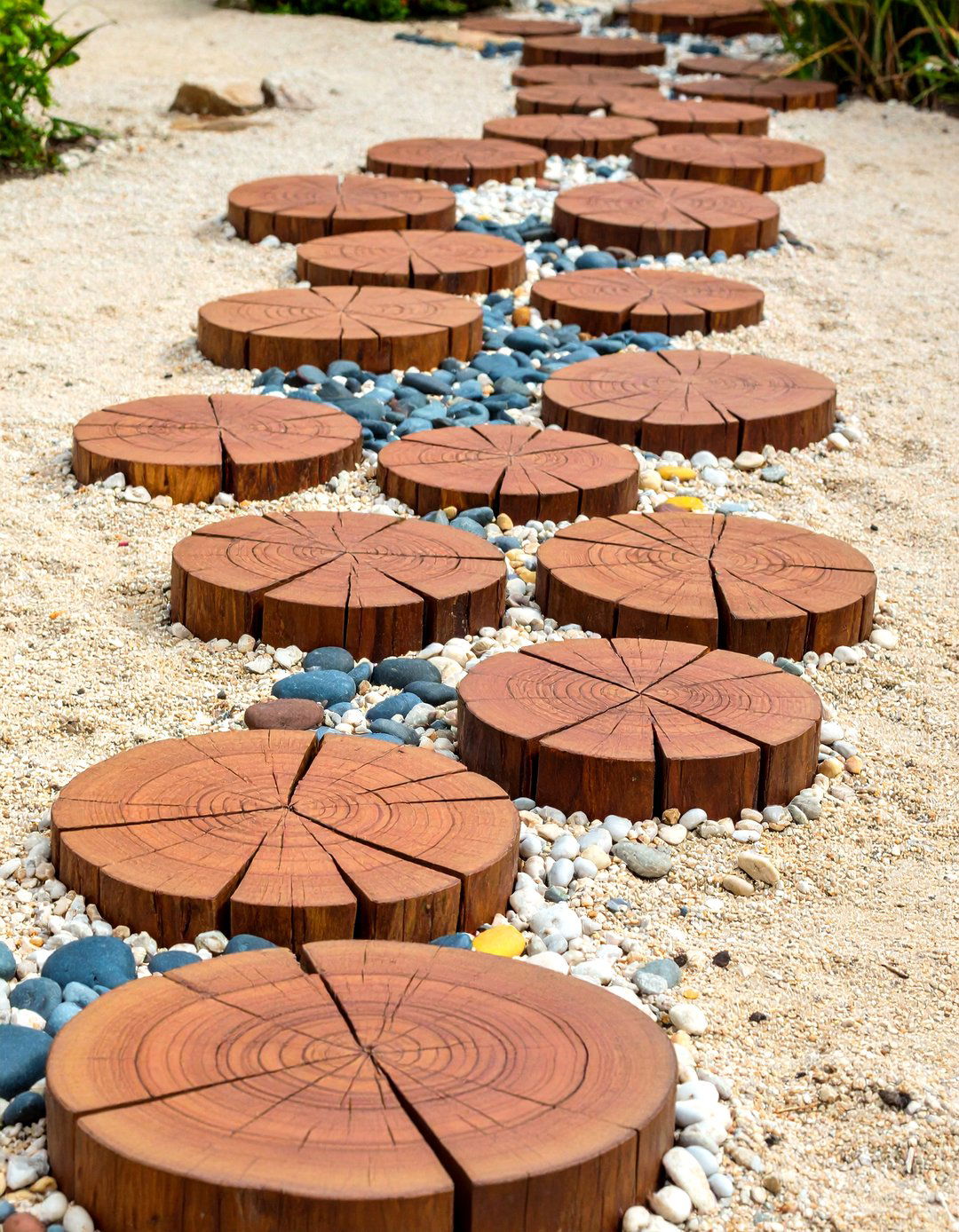
Unlike conventional pavers, 7-cm-thick cross-cuts of hardwood logs—often called wood cookies—add storybook whimsy to a farmhouse walkway. After pressure-treating or soaking slices in borate preservative, set each round on leveled sand, spacing them just far enough for a comfortable stride. Backfill gaps with washed pea gravel to discourage rot by boosting drainage. Annual coats of tung or spar-marine varnish slow weathering, yet even silvery aged cookies look delightful against green groundcovers.
11. Brick-and-Gravel Ribbon Walkway
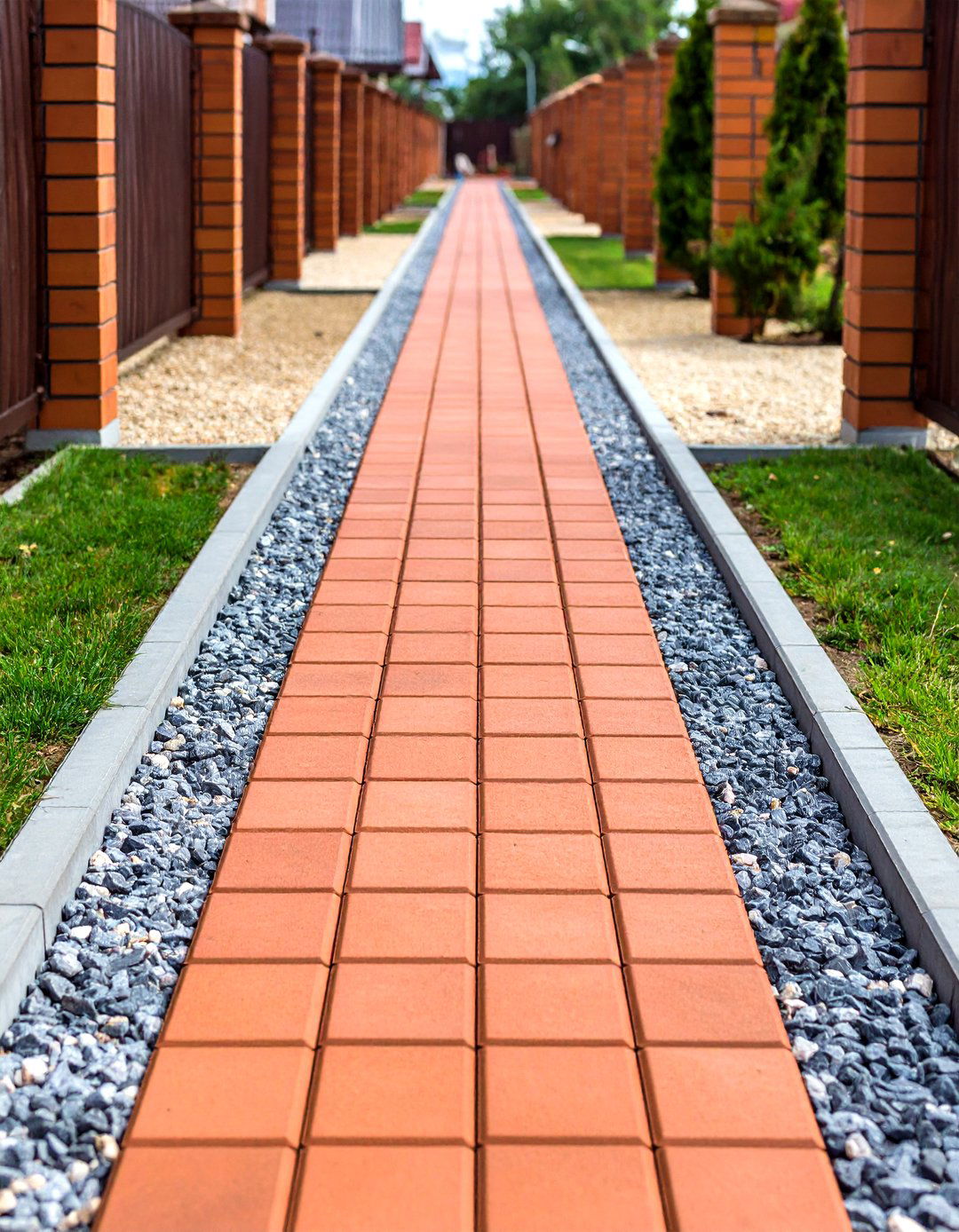
Certainly, combining materials can stretch a budget and highlight contrast. Create twin brick ribbons as tire tracks with 40 cm of compacted gravel down the center for a hybrid farmhouse walkway-driveway. The brick edges guide visitors visually while the central gravel absorbs puddles, making this option perfect for narrow side yards where rainwater needs a quick exit. Because installation relies on standard house bricks, repairs are simple—swap out cracked pieces and re-sand joints.
12. Herb-Bordered Kitchen-Garden Walkway

Surprisingly, a low hedge of lavender, rosemary, or chives can turn even a plain crushed-stone farmhouse walkway into a multisensory corridor. Plant herbs 30 cm inside the path edge so mature mounds just brush ankles, releasing fragrance with every pass. Mulch the planting strip separately to keep culinary clippings clean, and shear lightly after flowering to maintain tidy geometry. Not only do herbs deter some pests, they also furnish fresh sprigs mere steps from the stove.
13. Lantern-Post Lit Walkway for Night-Time Welcome
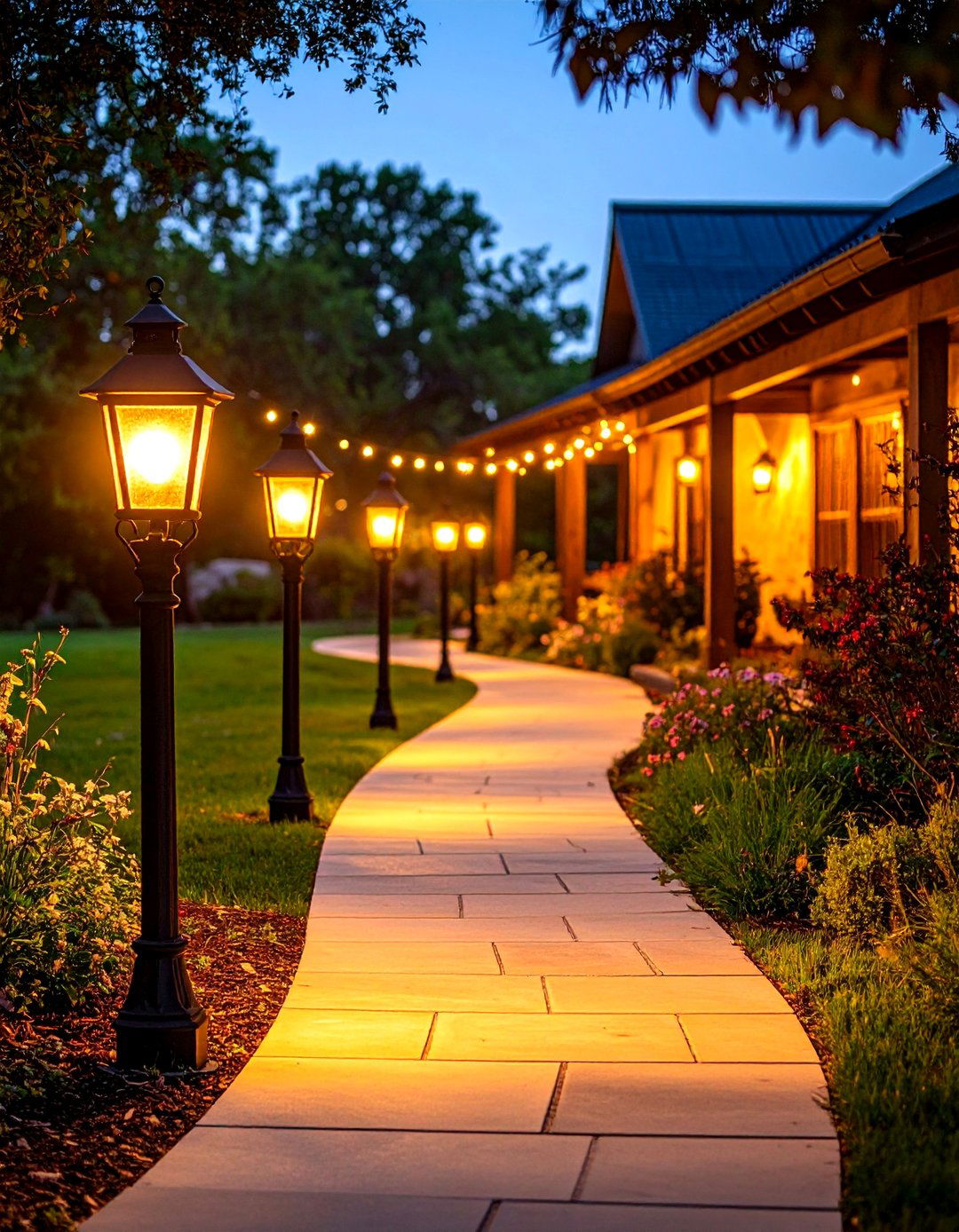
The farmhouse aesthetic shines after dark when a series of cast-iron or weathered-wood lantern posts cast warm pools across the walkway. Space fixtures 2–3 m apart on staggered sides to minimize glare and guide guests safely. Down-facing shades preserve starry skies while integrated photocells or low-watt LED bulbs curb energy use. Solar bollards offer a cable-free alternative where trenching is inconvenient. Prioritize even illumination on steps or grade changes to avoid missteps.
14. Arbor-Framed Entry Walkway
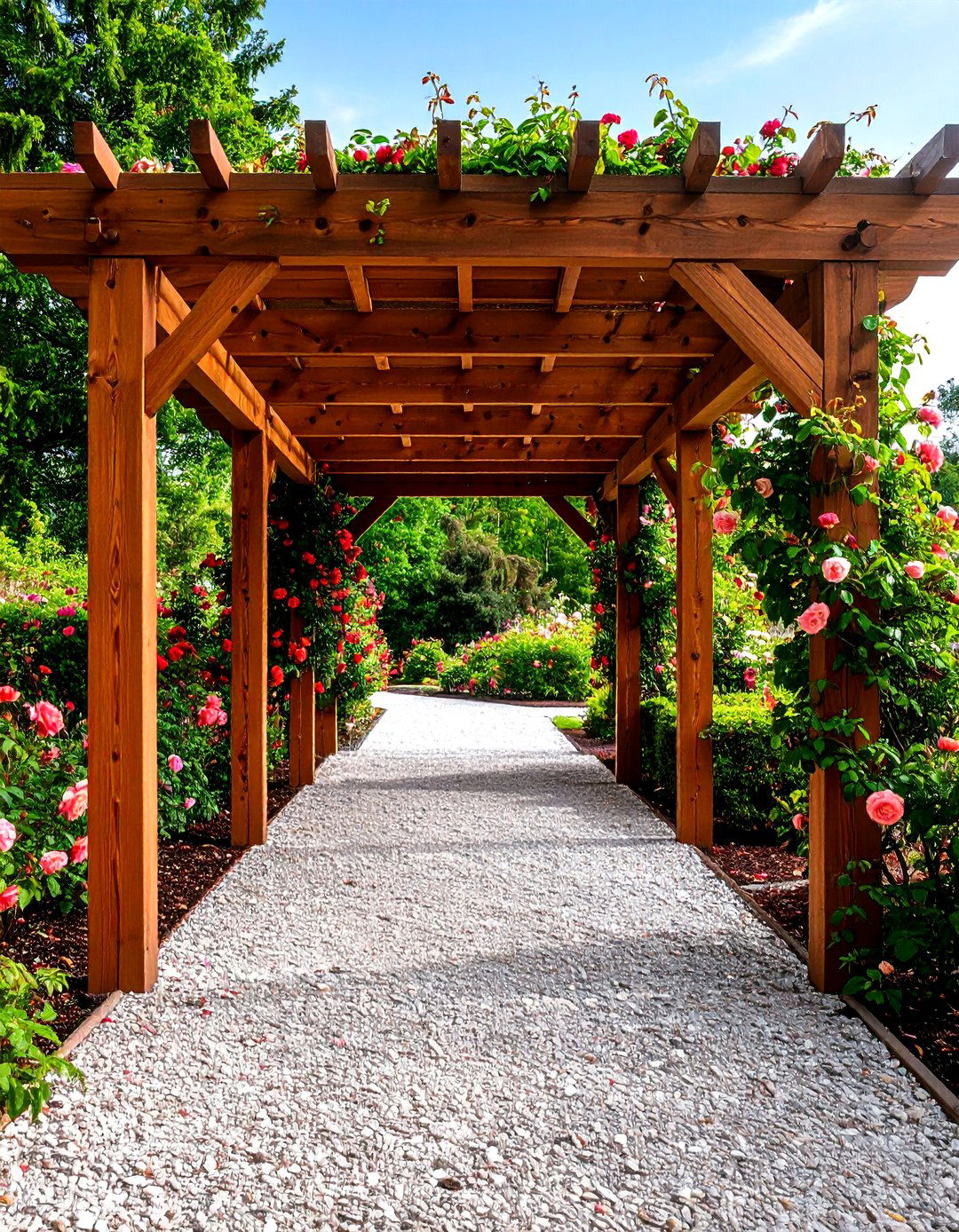
With a timber or metal arbor standing guard over the front path, you create a symbolic gateway that elevates the simplest farmhouse walkway. Choose cedar or powder-coated steel for longevity, anchoring posts in concrete 60 cm deep. Train climbing roses, honeysuckle, or grapevine up each side to add height, perfume, and seasonal color. A 1.2-m-wide opening feels generous yet still frames the façade for postcard-worthy photographs. Re-seal wood every few years, and prune vines annually so they don’t weight the frame.
15. Dry-Creek-Bed Stone Walkway for Drainage
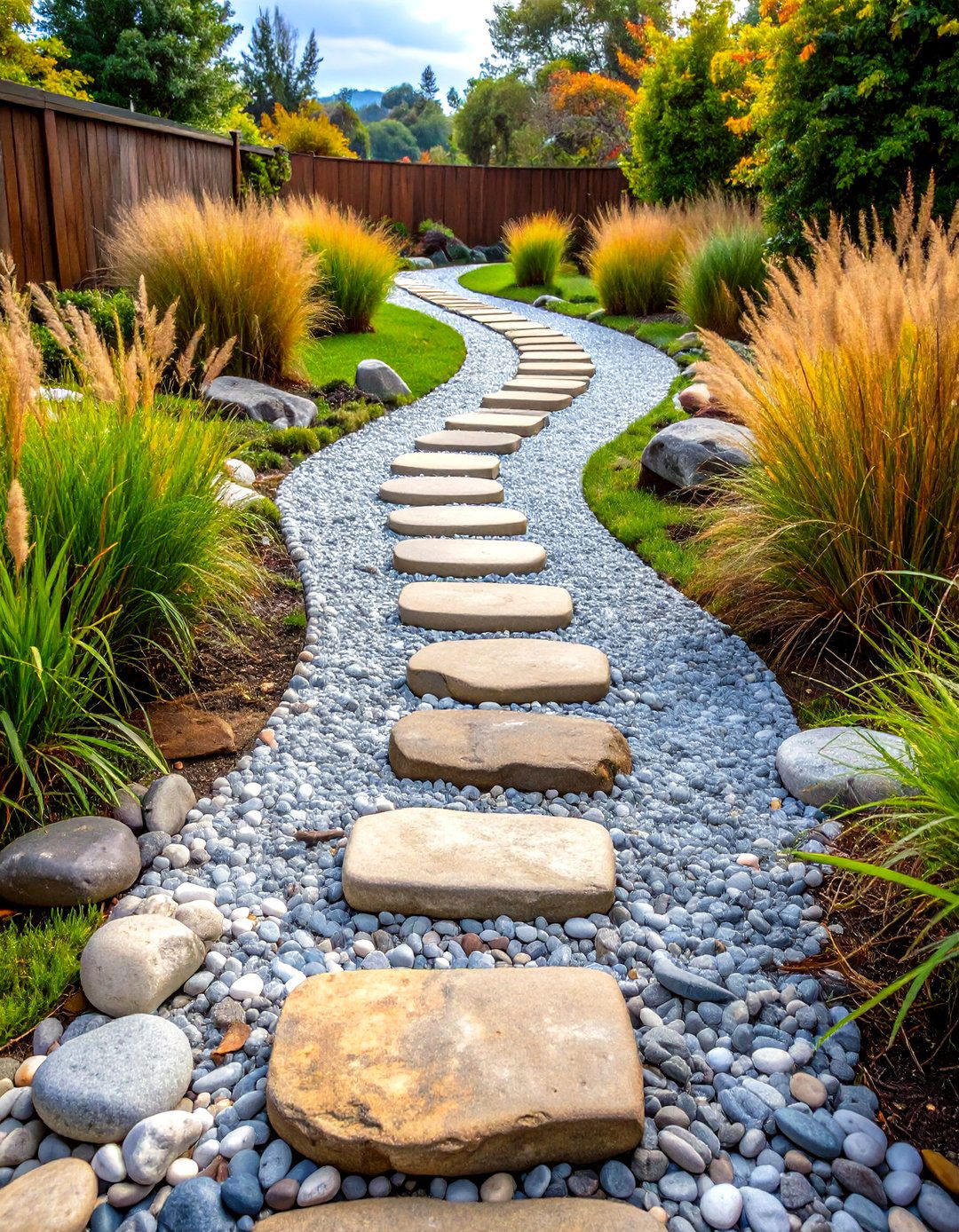
Unlike traditional hardscape, a serpentine dry creek of rounded cobbles doubles as both decorative path and runoff channel. Excavate a shallow swale, line it with landscape fabric, then arrange fist- to melon-sized river stones, filling voids with smaller gravel. In light rain the creek remains an artistic farmhouse walkway; during downpours it conveys water safely away from foundations, preventing erosion on sloped sites. Tuck drought-tough sedges along the edges to blend the channel into surrounding lawn.
16. Slate Slab Walkway with Moss Infill

Looking for bold drama? Oversized charcoal slate slabs interplanted with velvet moss create a striking color contrast that flatters white-washed porch columns. Install slabs on a free-draining gravel bed, keeping joints 20 mm wide; then sprinkle buttermilk-soaked moss fragments into the crevices and mist frequently until established. The cool, cushioned carpet accentuates slate’s cleft texture and even mutes footfall sound, lending an almost woodland hush to the farmhouse walkway. Shade and regular moisture are key to long-term moss vigor.
17. Patterned Concrete Paver Walkway Resembling Vintage Tile
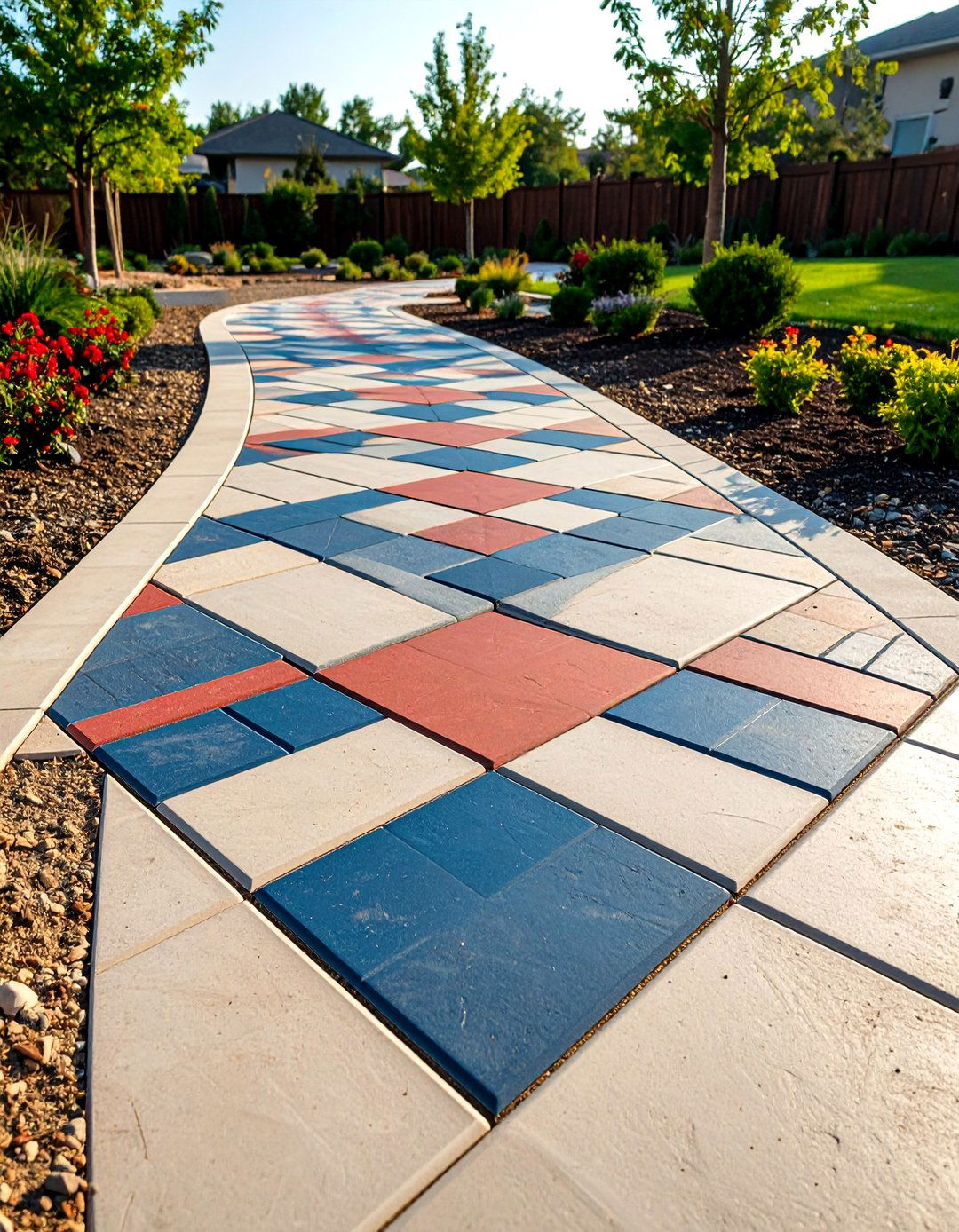
What if you crave color while still honoring simplicity? Choose concrete encaustic-look pavers featuring geometric patterns in muted blues or brick reds. Lay them over compacted gravel with a thin sand bed, spinning every other unit 90 degrees to form a quilt-like effect reminiscent of antique floor tiles. Sealed pavers resist stains from muddy boots and retain vibrancy under UV exposure, ensuring the farmhouse walkway stays cheerful through every season.
18. Terracotta-Tile Garden Walkway

A terracotta-tiled farmhouse walkway radiates Mediterranean warmth, pairing beautifully with clay chimney pots and rusty metal accents. Use frost-rated tiles at least 20 mm thick, buttering the backs with thin-set mortar over a concrete slab base to prevent cracking. Grout lines should be 8–10 mm; mix a pigment that matches surrounding soil for a seamless look. Seal annually with a breathable penetrating sealer to guard against efflorescence and retain that sun-baked ochre glow.
19. Native-Meadow Border Gravel Walkway
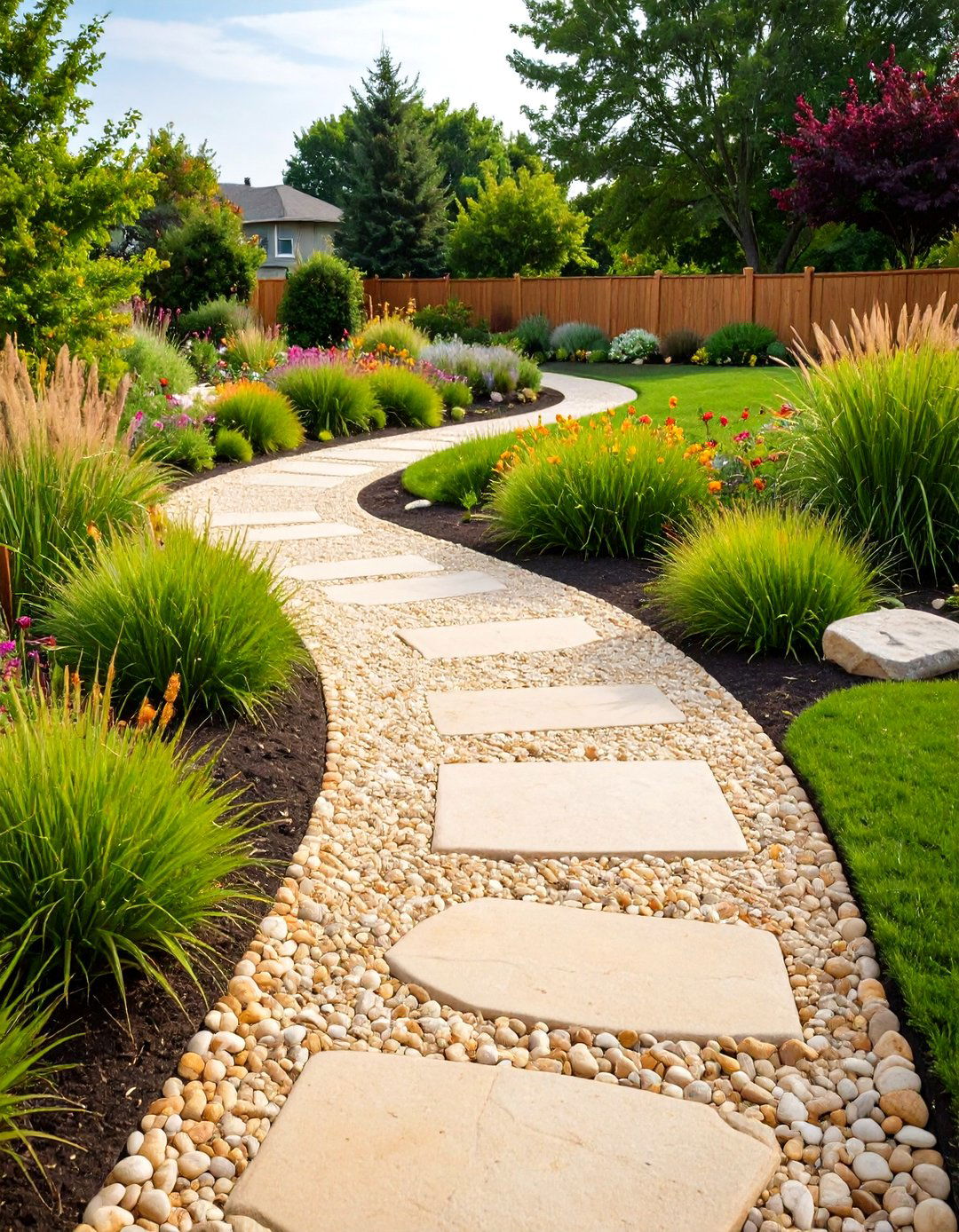
Bringing strips of native meadow grasses and wildflowers tight to a clean gravel path yields a striking contrast between order and untamed beauty. Mow a 10-cm buffer so seed heads don’t spill onto the stones, and choose a gravel color that syncs with bloom tones—tan decomposed granite flatters golden black-eyed Susans. Besides supporting pollinators, the airy planting casts dappled movement across the farmhouse walkway, making every stroll feel alive.
20. Seasonal Produce-Crate-Lined Walkway

Finally, repurpose rustic wooden produce crates as changeable edging for a farmhouse walkway, sliding them out to rotate displays. In spring, fill with potted violas; mid-summer swap to basil and cherry tomatoes; autumn might showcase gourds and ornamental kale. Securing a rebar stake through each box corner prevents tip-over in gusty weather, while a coat of exterior-grade poly sealer helps crates shrug off dew. The rotating vignette keeps your entry evolving without costly re-hardscaping.
Conclusion:
From softly crunching pea gravel to artful river-rock mosaics and lantern-lit arbors, each farmhouse walkway idea above blends humble materials with thoughtful technique to elevate daily comings and goings. Whether your priority is drainage, fragrance, heritage charm, or budget simplicity, there’s a path style ready to complement both architecture and landscape while inviting guests—and you—to slow down and savor the journey home.


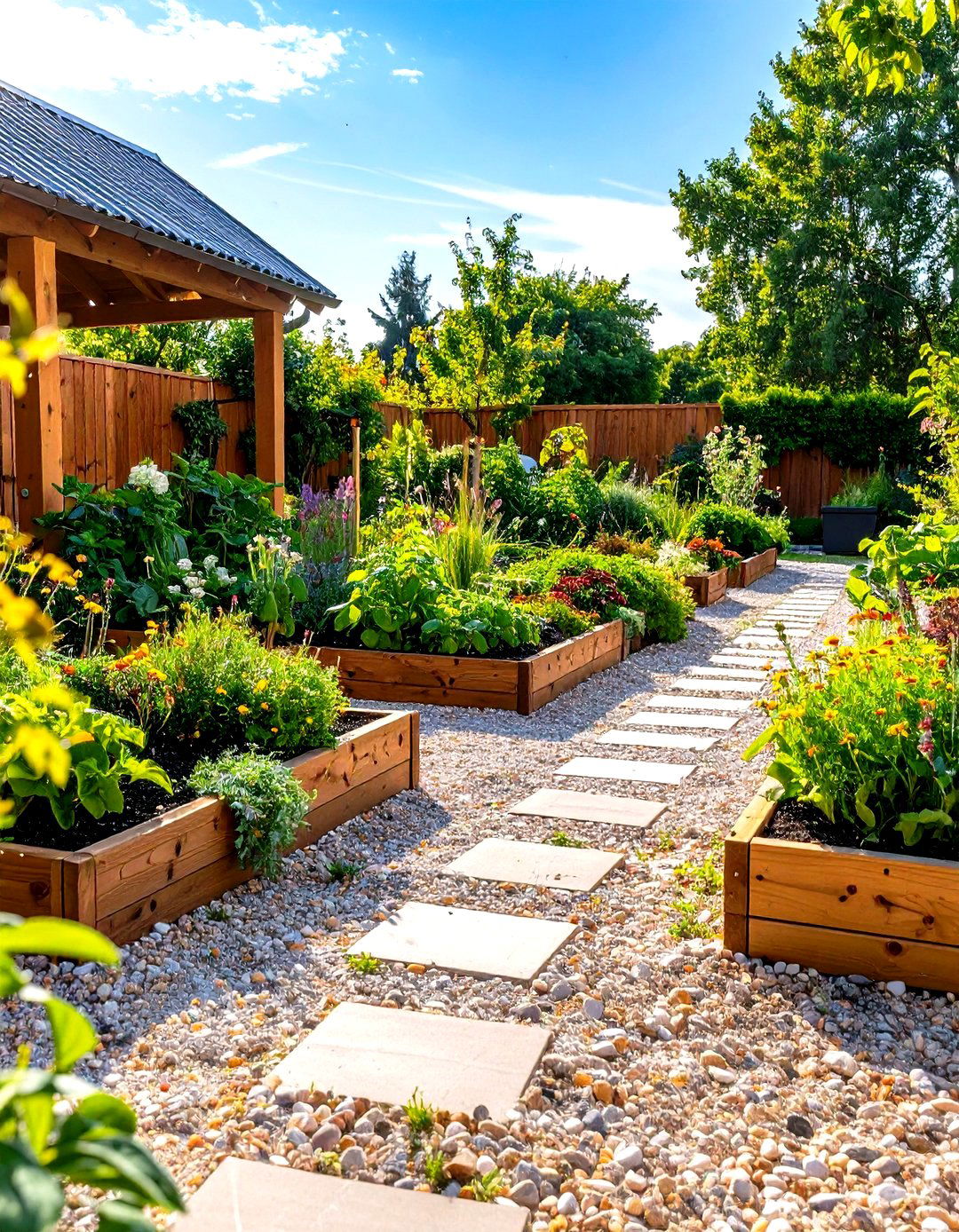
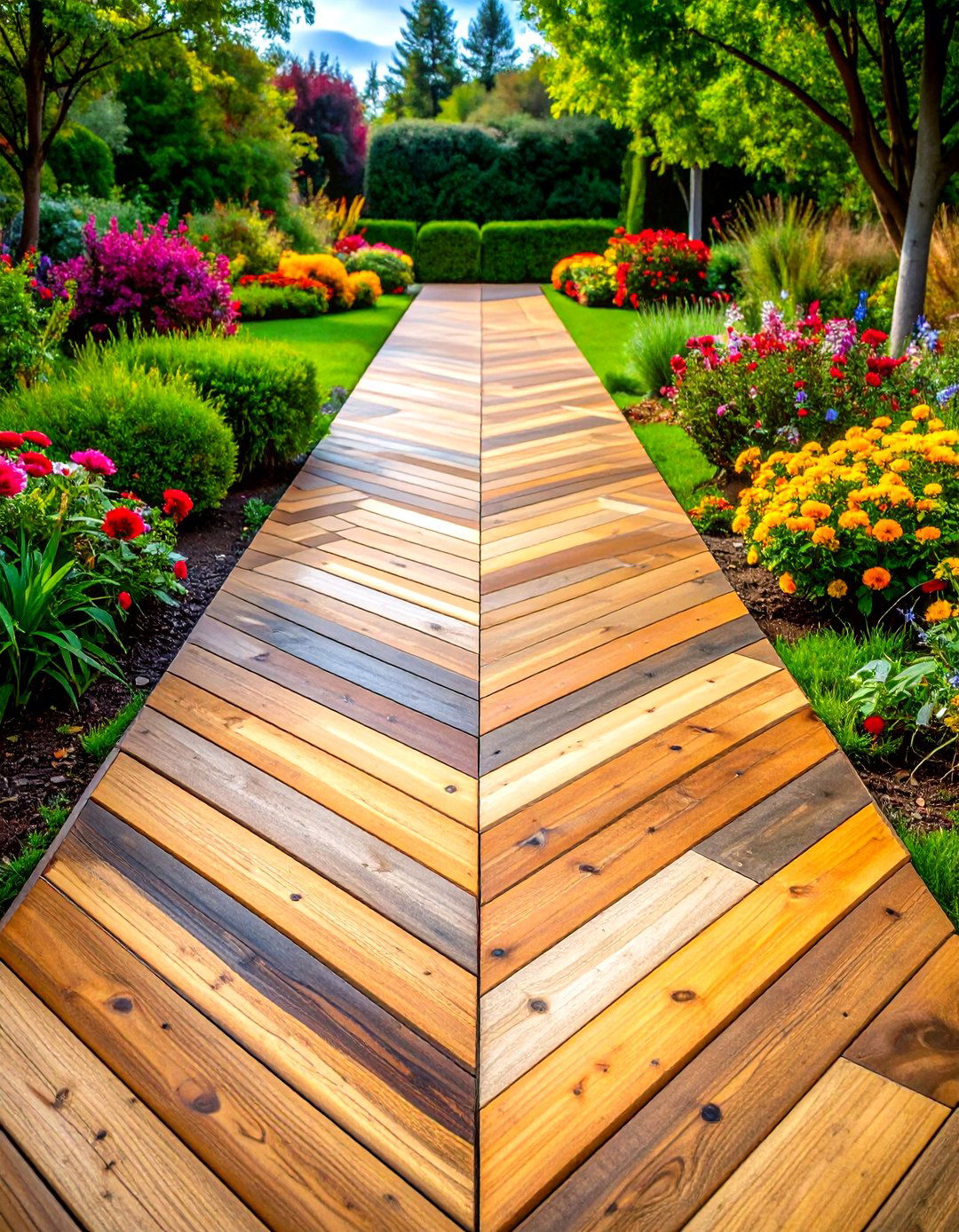
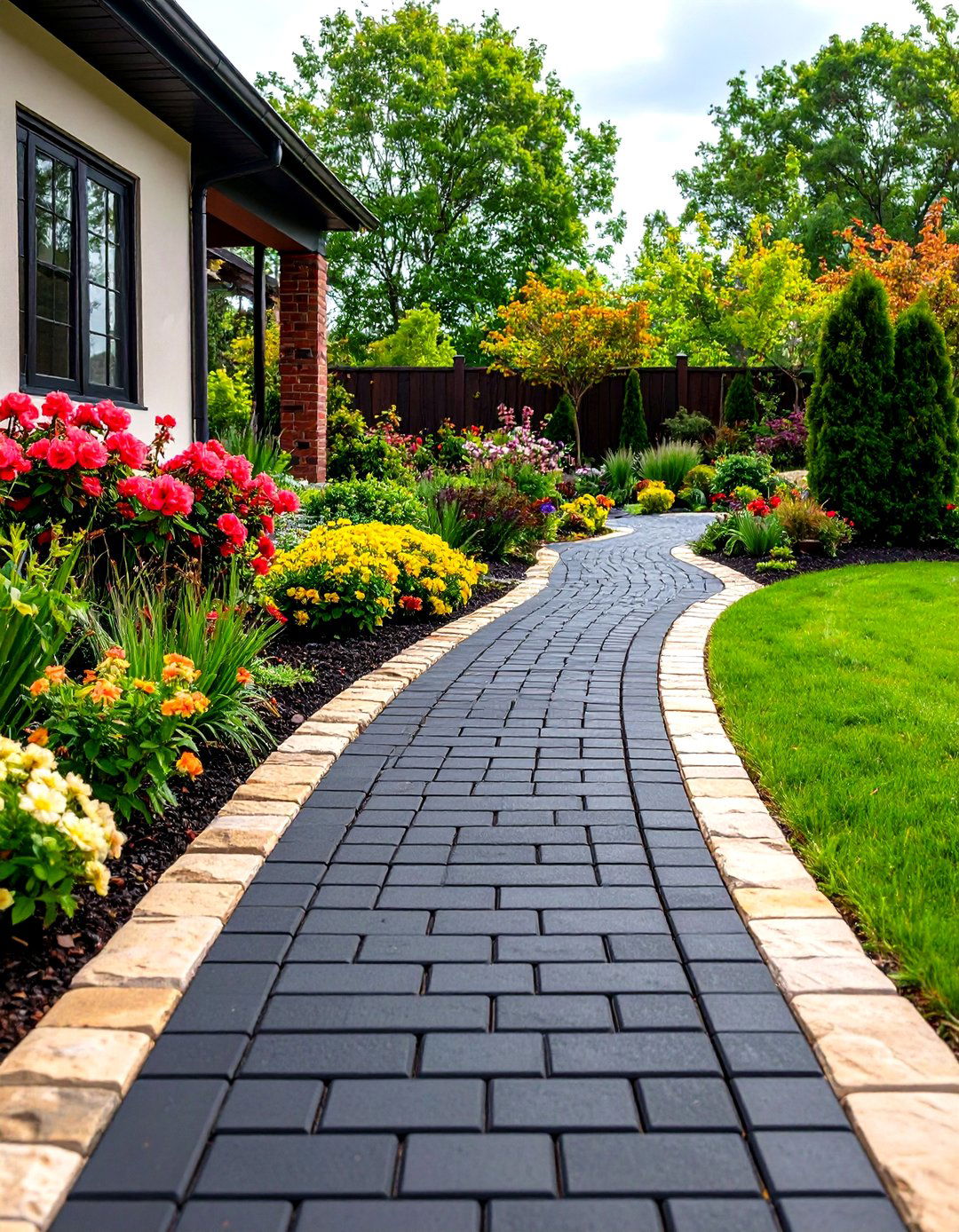
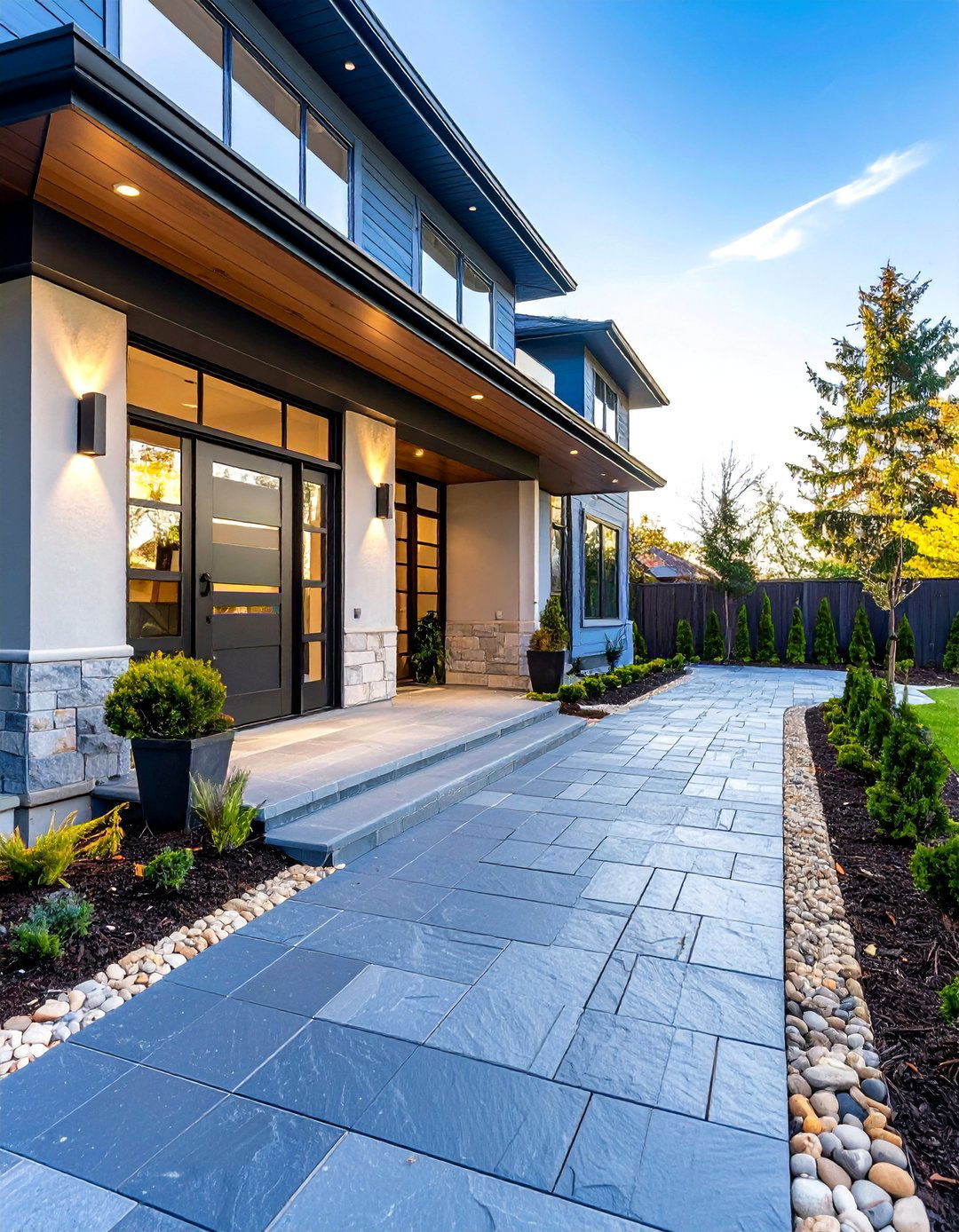
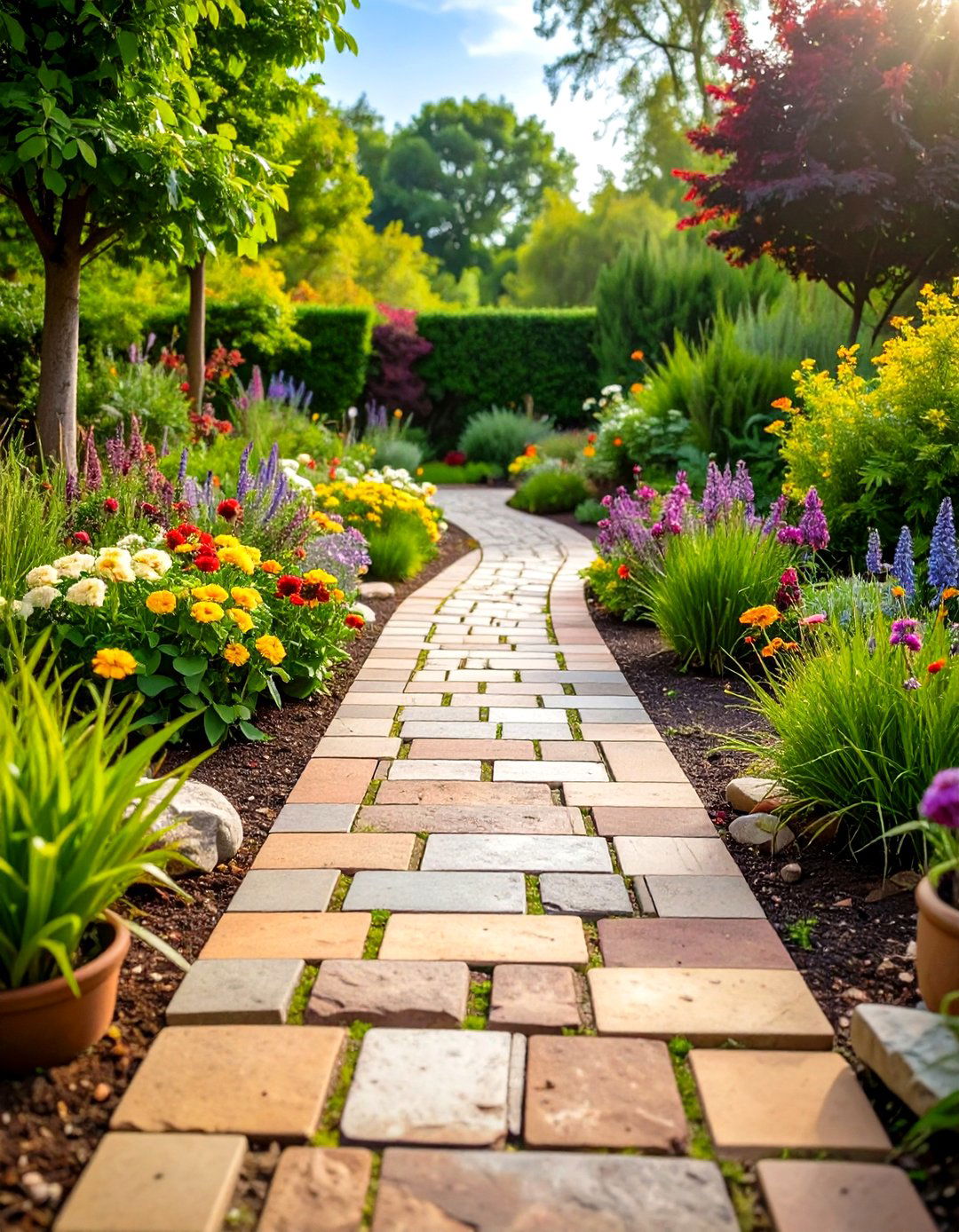


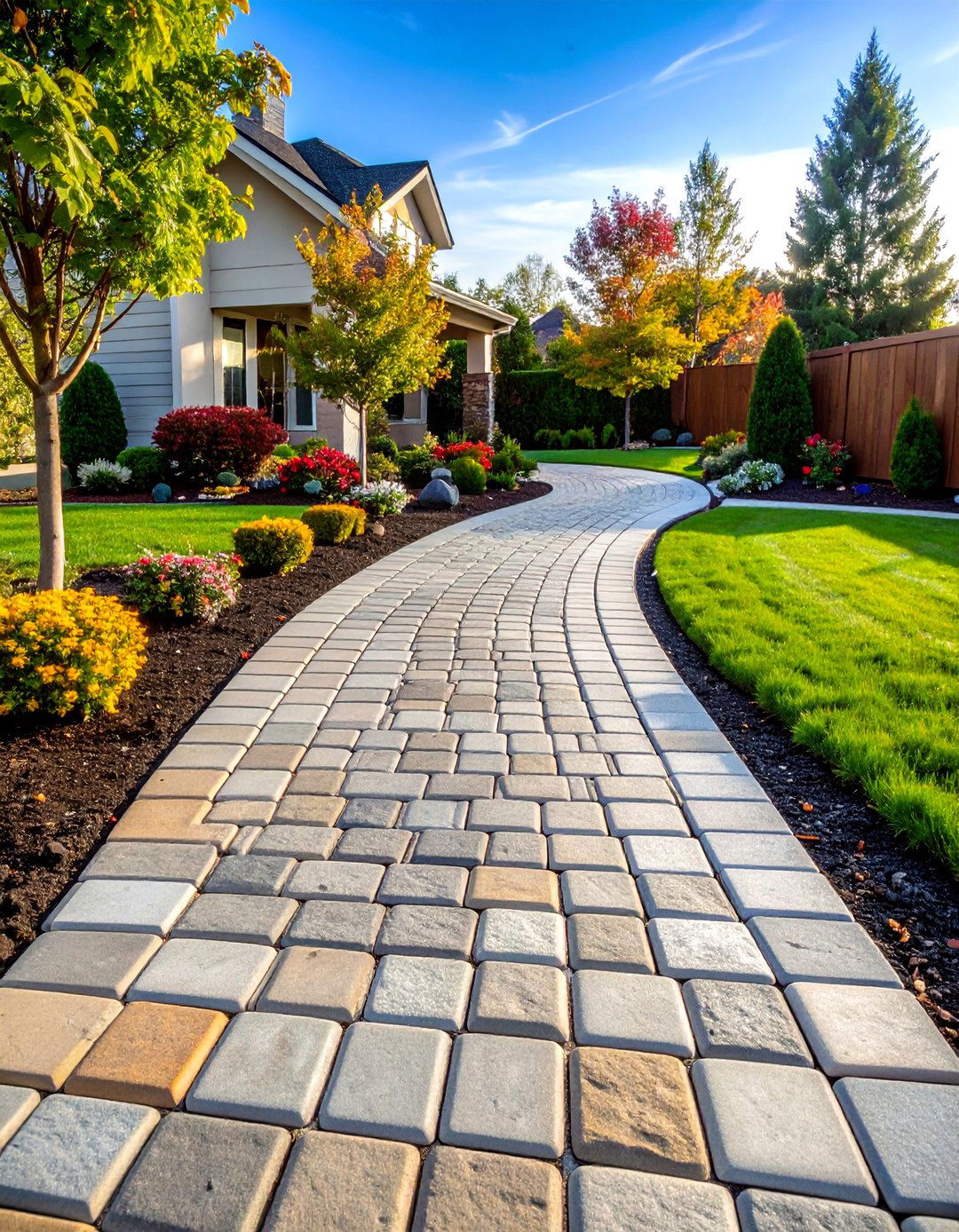

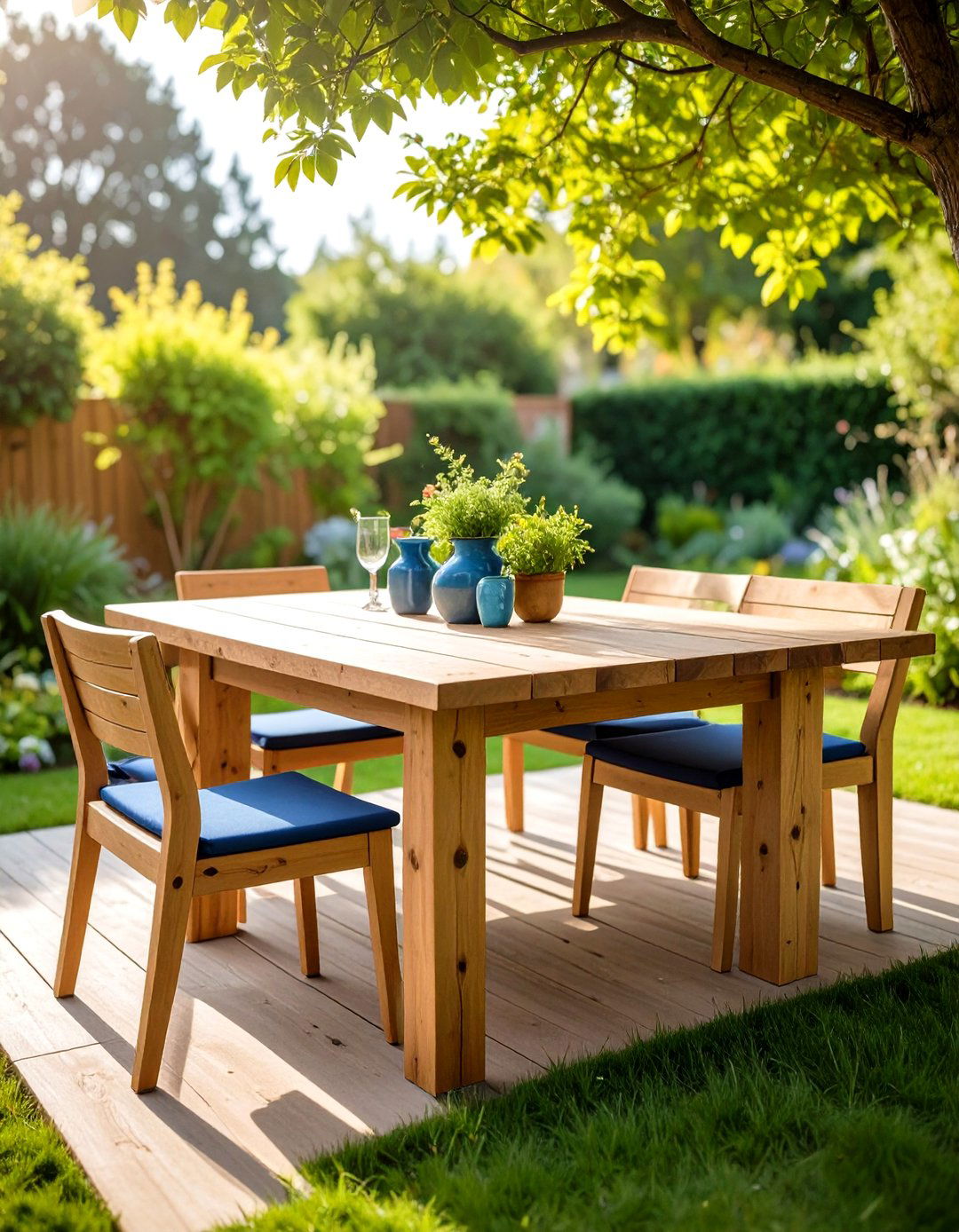

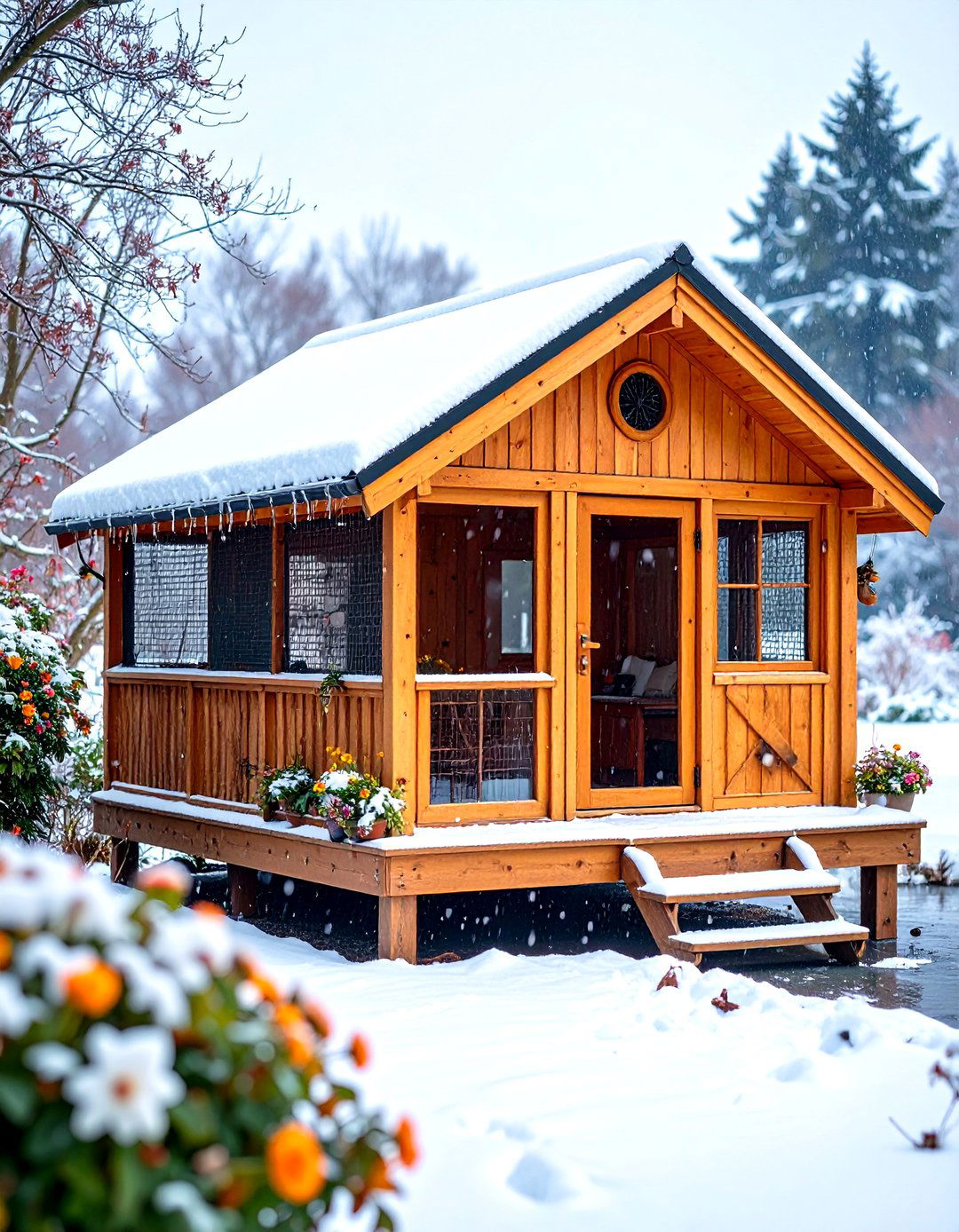
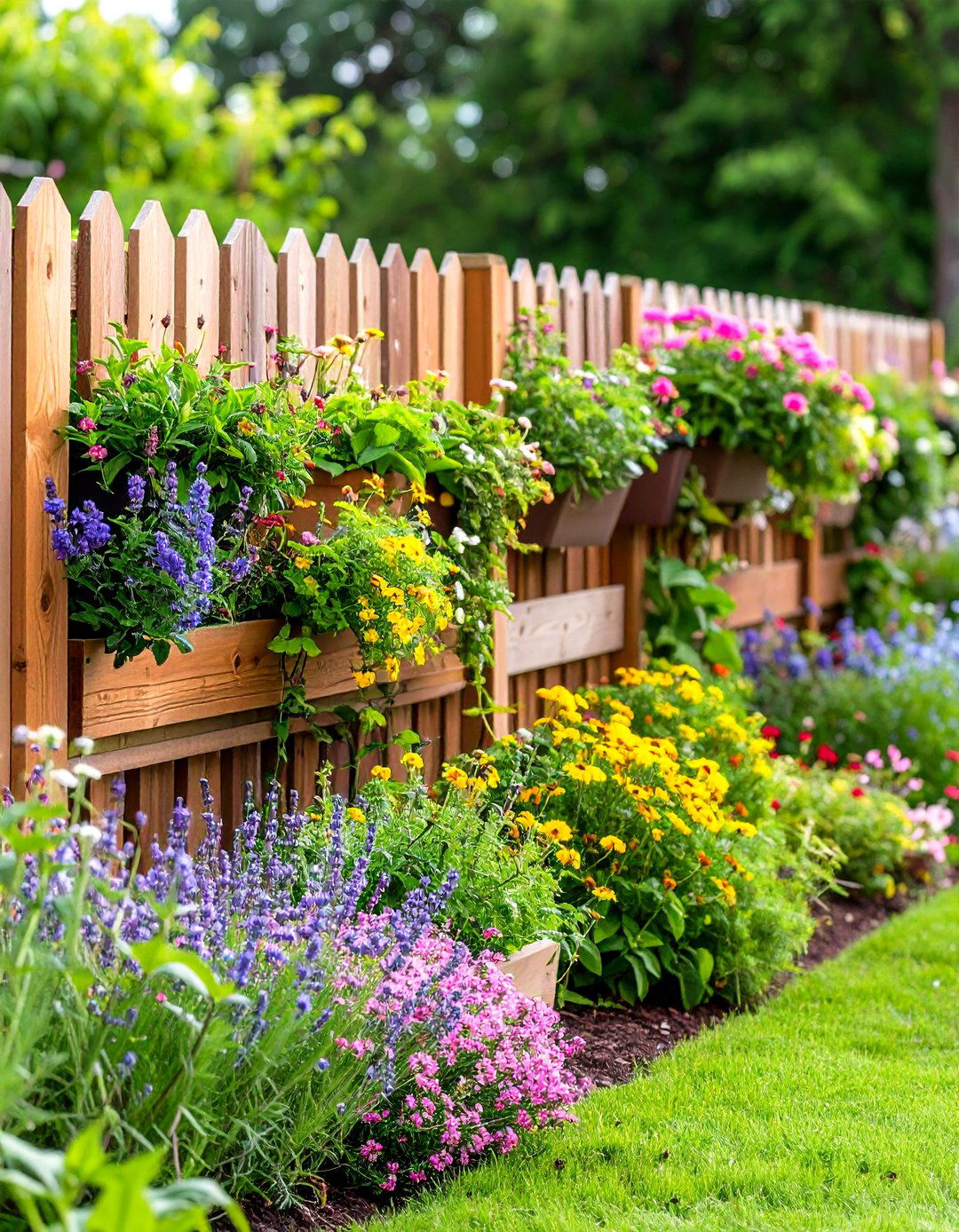

Leave a Reply